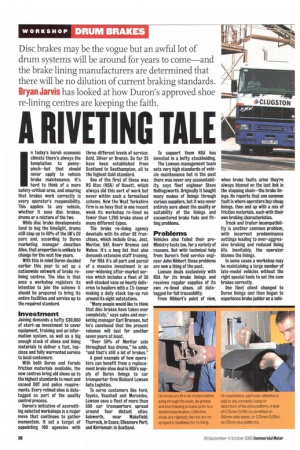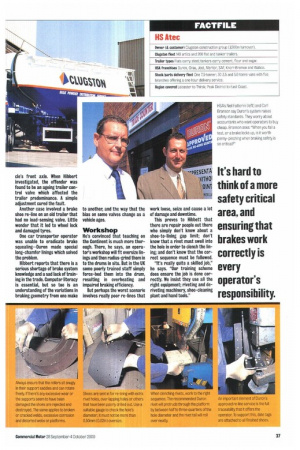Old shoes are first de-riveted before going through the wash,
Page 38

Page 39

If you've noticed an error in this article please click here to report it so we can fix it.
de-grease and shot-blasting process prior to a detailed examination. Defective shoes are rejected; the rest are resprayed in readiness for re-lining.
On examination, particular attention is paid to any concavity (warp or distortion) of the shoe platform. A limit of 0.25mm (0.01in) is permitted on 100mm-wide shoes, or 0.75mm (0.03in) on 175mm-plus platforms.
Always ensure that the rollers sit snugly in their support saddles and can rotate freely. If there's any excessive wear or the supports seem to have been damaged the shoes are rejected and destroyed. The same applies to broken or cracked welds, excessive corrosion and distorted webs or platforms.
Shoes are sent in for re-iring with extra rivet holes, over-lapping holes or others that have been poorly drilled out. Use a suitable gauge to check the hole's diameter; it must not be more than 0.50mm (0.02in) oversize. When clenching rivets, work to the right sequence. The recommended Duron rivet will protrude through the platform by between half to three-quarters of the hole diameter and the rivet tail will roll over neatly. An important element of DUMP'S approved re-line service is the full traceability that 1 offers the operator. To support this, date tags are attached to all finished shoes.












































































































